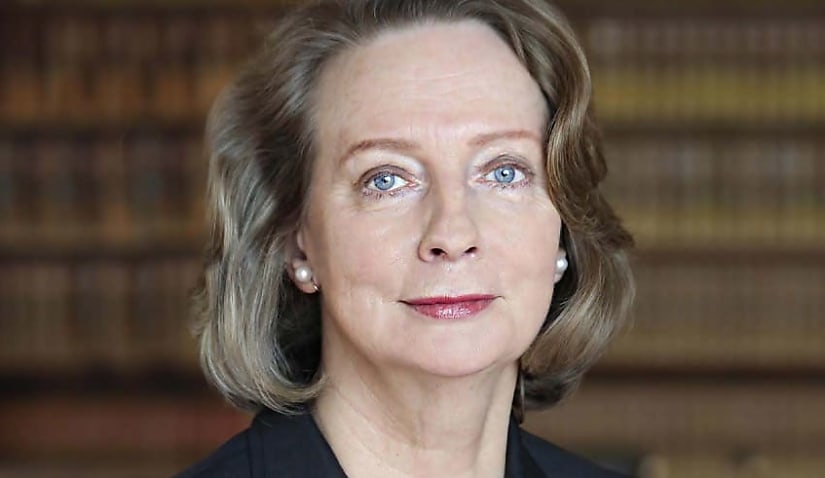Powered by MOMENTUM MEDIA
Progress is certainly being made towards parity in Australia’s legal profession, Chief Justice Susan Kiefel says, but political appointments to the bench and the demands of family life can also act as hurdles, while the High Court’s own research shows improvement is needed in increasing appearances by women before the bench.

In a keynote address delivered earlier today (Saturday, 6 August) about trends towards equality, at the Australian Women Lawyers’ annual national conference, the Honourable Chief Justice Susan Kiefel AC — the first woman to be appointed as chief justice to the High Court of Australia — detailed, by way of experiences and against the backdrop of statistics, the extent to which progress is being made in the legal profession.
Kiefel CJ — who was appointed as chief justice by the Turnbull government in late 2016 and assumed the position in early 2017 following the retirement of the Honourable Robert French AC — recalled being treated well as a junior female barrister by those in chambers, even if those doing the briefing were not as generous.
“When at the bar, I was aware from time to time of briefs being withheld from me, because I was a woman. Sometimes, it was because of the client. Some ethnic groups would not have a woman acting for them. On other occasions, the male solicitors were at fault. Some firms had a policy of not briefing women at all,” she reflected.
“I decided not to bother too much about the obvious discrimination. As long as I was busy enough, it didn’t matter if I missed out on a brief. And, if the briefs were getting low, I went to the cinema … miraculously, when I returned, there were always new briefs.”
“I may have been regarded as something of a curiosity, but I do not remember being treated other than with courtesy and respect. The Qld bar was much smaller then, and more collegiate. The doors of senior barristers were always open to me, as they were to any very junior barrister. No request for assistance from me was ever refused,” Kiefel CJ noted.
“I do not myself recall an occasion when I was treated differently to a male opponent in court, but I was reminded some time ago, by a male barrister of the same vintage as me, of one such occasion. On an application for an injunction, the judge was virtually winking and nodding at my opponent, and talking in a way which suggested that they, but not I, were men of the world. I was glad to hear that my colleague said that he and other male barristers who observed this performance were shocked by it.”
On the other hand, on one occasion, her honour said that she was positively assisted by a prominent judge.
“In a very early appearance in the High Court, having dealt with a question from the Chief Justice, Sir Garfield Barwick, I lost my way in the argument. Whilst I was rendered mute, Sir Harry Gibbs came to my aid by suggesting the point he assumed I was about to make, consistent with my argument,” she said.
On the whole, her honour described her time as a junior barrister in Queensland as “a little mixed, but overall quite positive”.
Experiences of others
It, therefore, “disappoints” her, Kiefel CJ mused, “that not all women can say the same”.
“I assume and hope that young lawyers today, regardless of gender, would be mystified about the discrimination which women in the law suffered from earlier. All should consider themselves entitled to equal treatment,” her honour proclaimed.
As a judge, her honour outlined, Kiefel CJ has had 43 associates since 1993, thirty-three of whom have been women, and many of whom have gone on to make significant professional achievements in academia, at the bar, in partnership and in publishing.
“They are brilliant, strong and highly capable women, but in an informal survey of some of my former female associates, I was discouraged to hear from a few that they, and other women barristers, consider that sometimes they are treated differently from male barristers, including not being taken as seriously as men, particularly by male solicitors,” her honour said.
Too few women silks appearing
Kiefel CJ listed various statistics demonstrating the progressive increases in female representation in Australia’s legal profession since she was admitted in 1975 — at which time, she said, there were just 10 women at the Queensland Bar (or, 4 per cent of the state’s barristers).
Now, according to the most recent National Profile of Solicitors, women make up 54 per cent of the national professional body, her honour said, while the latest Financial Review findings are that 32 per cent firm partners are women and 46 per cent of new partners are women.
Such figures are, of course, encouraging. However, Kiefel CJ said that internal research undertaken by the High Court at her request shows that — since her appointment as chief justice — there has been only “somewhat” of an improvement in the number of women appearing before the High Court, from the “rather bleak” figure of just 14.9 per cent of senior and junior counsel 15 years ago to today’s figure of over 20 per cent.
At the senior counsel level, the court’s research shows that, a decade and a half ago, just 5.6 per cent of such appearances were by women, and today, it is under 13 per cent, her honour said.
“I must say, I had thought the figures would be better,” Kiefel CJ remarked.
“There always seems to be a substantial representation of women in the courtroom for hearings, or perhaps I just noticed them more. I had perhaps assumed that female representation on the bench and a female chief justice would’ve had a greater impact, but at least the figures appear to be improving.”
“Whilst these statistics on female silks appearances are quite low, they are largely consistent with the percentage of female silks at the bar, and representation at the bar table cannot improve much more until there are higher numbers of female silks at the bar,” Kiefel CJ said.
There is at least one obvious reason, her honour pointed out, for the numbers of female silks not increasing more significantly.
“Since the 1990s, most state and federal attorneys-general have pursued a policy of appointing women as judges. So far as concerns courts, this often means depending on the appointment process, offering appointment or encouraging a woman to apply for appointment quite soon after a woman takes silk,” Kiefel CJ said.
“This may be good for the courts and society more generally, but the bar and the women in question pay a price.”
“The bar loses female mentors and examples to younger women, lawyers, of senior women appearing in the highest courts and assuming leadership positions at the bar. The female silks who quickly accept appointments may also lose the experience of leading a litigation team and the responsibility of being the principal advisor and decision-maker. Experiences such as this are very important to [one’s] confidence, which is necessary to carry out the office of a judge,” her honour explained.
Demands of family life
Another inquiry of her honour’s former associates, Kiefel CJ went on, was whether women lawyers are given an equal opportunity to succeed, or whether there are barriers.
“The response was pretty much as I had predicted,” her honour noted.
“The principal issue identified was the effects of the demands of family life. It was observed that, generally speaking, solicitors’ firms were able to, and do offer, support and assistance by way of maternity leave, and some flexibility in working days and hours. The bar cannot offer so much, though some progress is being made in individual sets of chambers.”
“Life in the time of COVID-19 has taught [us] that there can be greater flexibility about workplaces, but working from home is not always a possibility for barristers. Of course, acknowledging that the demands of family life may affect a woman’s career raises the question about whether those demands are shared equally with the partner or whether one career is given priority over the other, that these are personal decisions,” Kiefel CJ said.
“It is only rarely that one hears of a woman or women being advanced on account of her having the greater responsibility,” although her honour added that there are such stories, including ones she is aware of.
What the future looks like
Concluding her remarks, her honour reflected on how far the profession has come in recent decades.
“Women lawyers are present in even greater numbers. They’re taking leadership positions. They are succeeding and are in positions of authority. There are some areas, including at the highest levels, where women may not be afforded the same opportunities as their male counterparts. And, the reality is, that family life for some will delay, or render more difficult, promotion or success.
“But, generally, much has been achieved towards quality in the legal profession,” Kiefel CJ deduced.
We're evolving — and so should your insights. Heads up — Lawyers Weekly is going premium from 1 May for just $5 a month. Stay informed without missing a beat. More information coming soon.

Jerome Doraisamy is the managing editor of Lawyers Weekly and HR Leader. He is also the author of The Wellness Doctrines book series, an admitted solicitor in New South Wales, and a board director of the Minds Count Foundation.
You can email Jerome at: